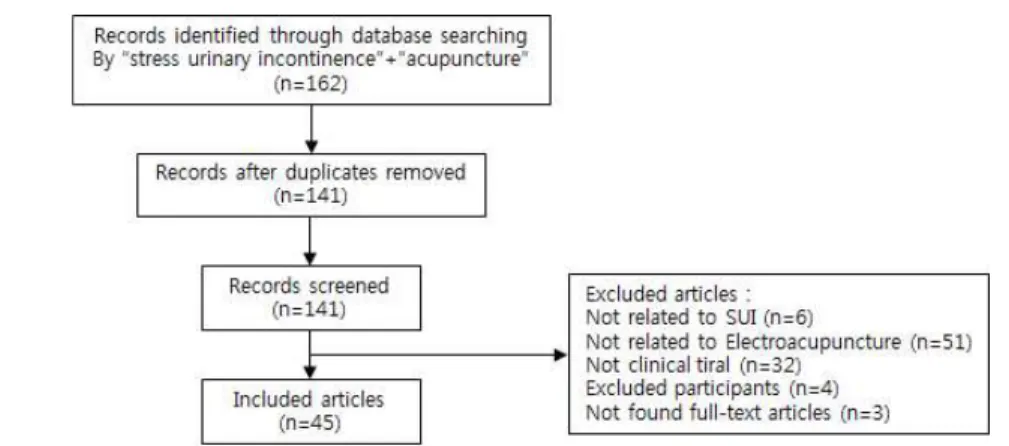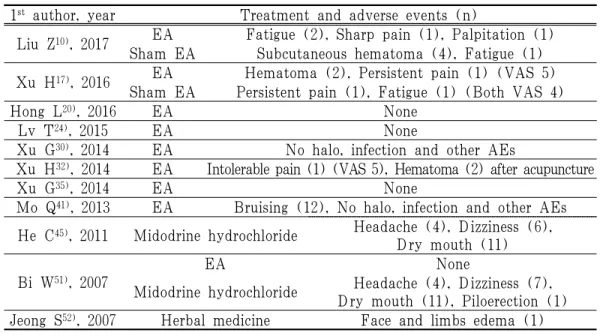대한한방부인과학회지 pISSN 1229-4292 / eISSN 2508-3619 J Korean Obstet Gynecol. VOL.30 NO.4 : 149-174 (2017) https://doi.org/10.15204/jkobgy.2017.30.4.149
149
여성 복압성 요실금에 대한 전침치료 연구 동향
1
청연한방병원 한방부인과,
2청연의학연구소 박어진
1, 조현정
1, 조희근
2ABSTRACT
A Review of Research on Electroacupuncture for Female Stress Urinary Incontinence
Eo-Jin Park
1, Hyun-Jeong Jo
1, Hee-Guen Jo
21
Dept. of Korean Medicine Obstetrics & Gynecology, Chung-Yeon Korean Medicine Hospital
2
Chung-Yeon Medical Institute
Objectives: The aim of this study is to establish a base for further research by reviewing studies on electroacupuncture (EA) for stress urinary incontinence (SUI).
Methods: Clinical studies concerning the effects of EA for SUI, were obtained from Cochrane Library, PubMed, CNKI, RISS, NDSL, KISS and OASIS.
Results: Forty-five studies met the criteria, which included 33 RCTs, 1 pilot RCT, 4 non-randomized Clinical Trials, 6 Case studies and 1 Orthogonal design study with 3638 patients. There was only one article published in Korea. In these study, the most common primary outcome measurement was the pad test. Most of the studies showed the group treated by EA effects compared to the control group. Also, many interventions that combined with EA were found and all complex therapy group had significantly better than control group. 7 studies observed adverse events (AEs), four of which referred to EA related AEs among them. And 4 studies reported no AEs associated with EA.
Conclusions: Despite several limitations, various studies to prove limited yet effective EA on SUI provides much significance. Subsequent studies conducted by the complementary systematic review of the studies and well-designed clinical trials using the methodological quality will be needed to more firmly validate the therapeutic effect of EA on SUI.
Key Words: Stress Urinary Incontinence (SUI), Electroacupuncture, Female
10 )

